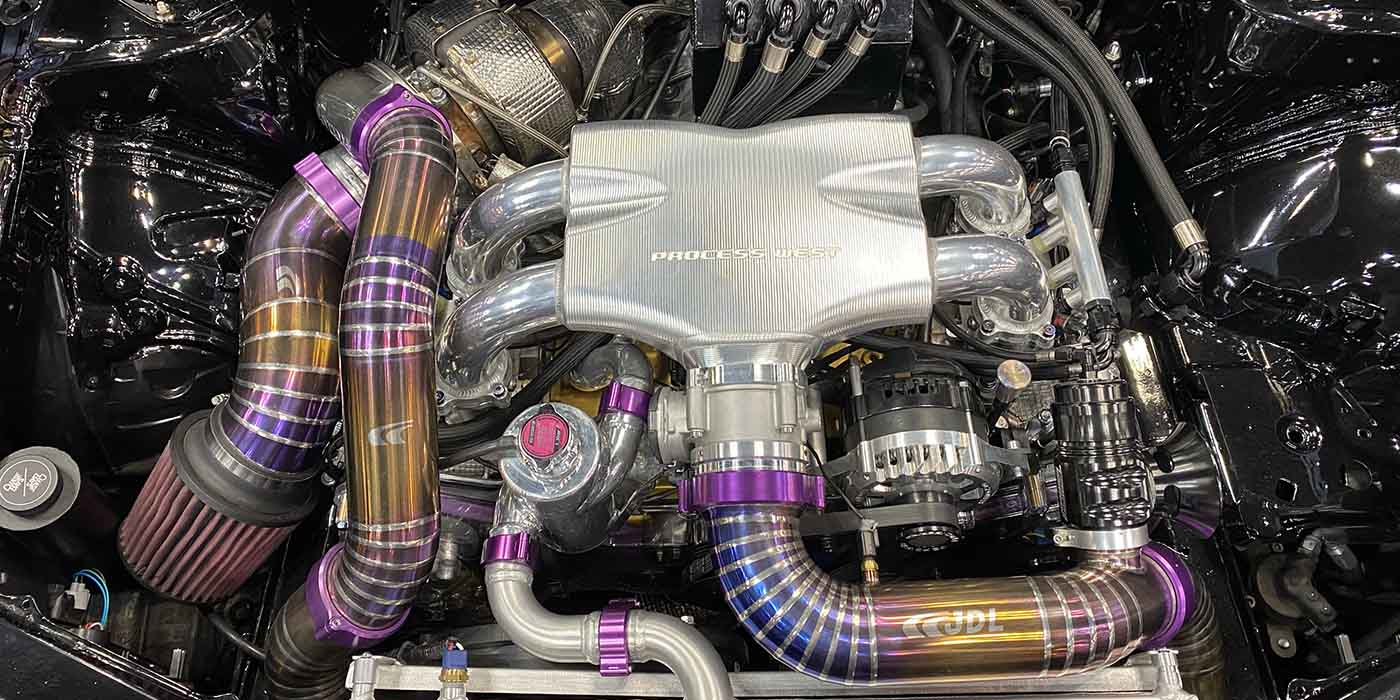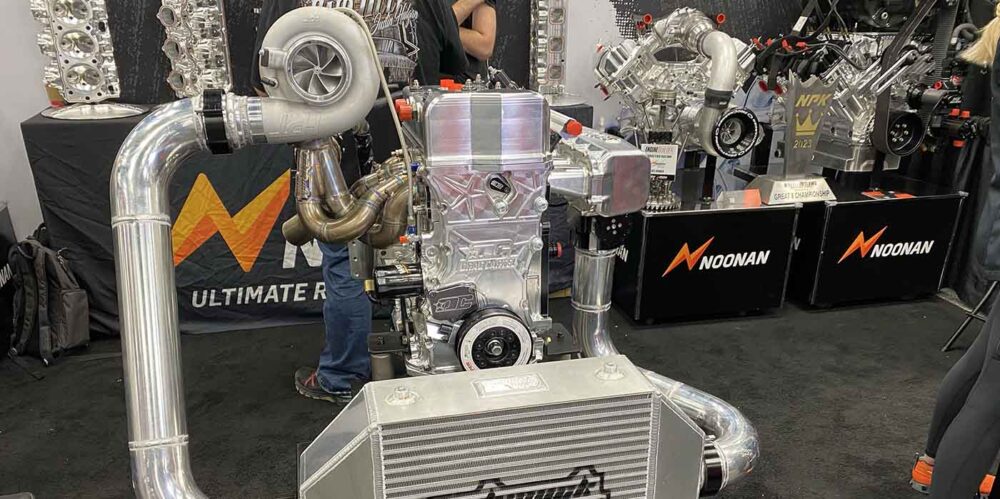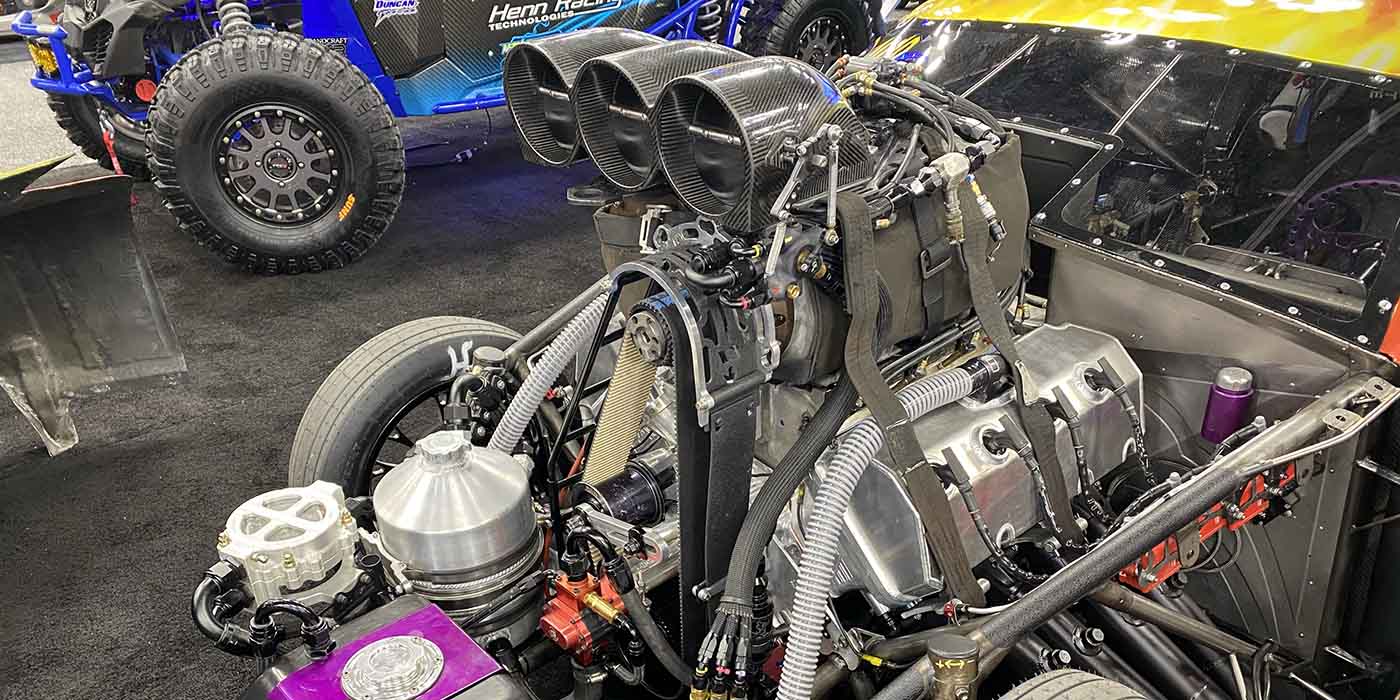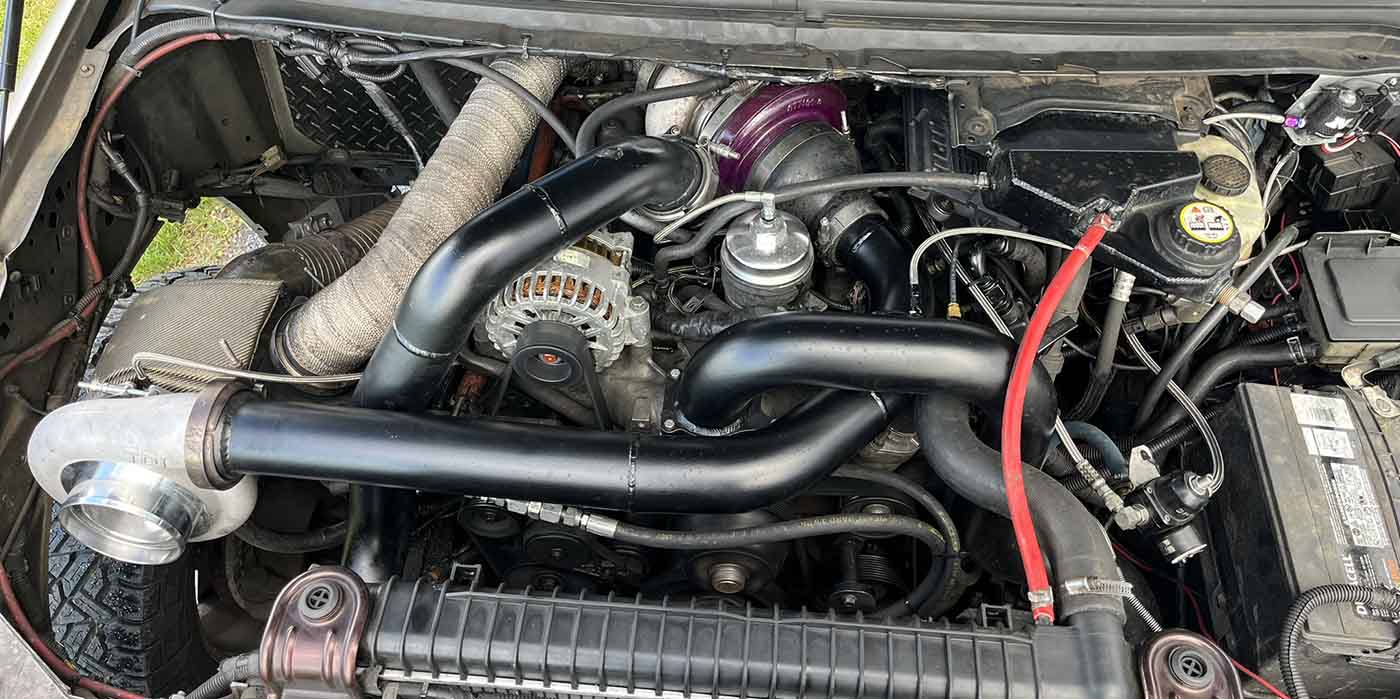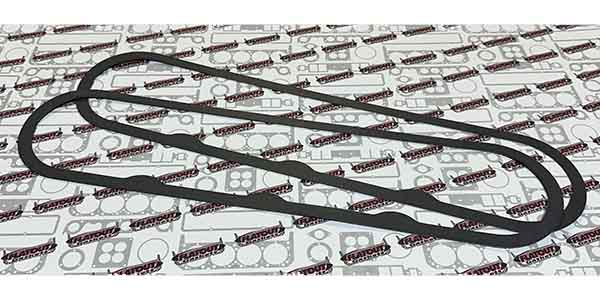Engine of the Week is presented by



There’s really only one thing you think of when you see a Hearse coming down the street. However, Jason Pickett wants to change people’s mentality from one of death and funerals to one of speed and awesomeness. His 1993 Buick Roadmaster Hearse has been built up over the years to handle the drag strip and the street thanks to a lot of hard work and a twin-turbocharged 427 cubic inch LS3 engine.

If you’re anything like us, when you see full station wagons drag racing, you stop and take notice. However, when you see a Hearse take to the start line, your brain explodes a little bit. We’ve only ever seen one other Hearse ready to tackle the drag strip, and that was Farmtruck and AZN’s “Farmaldehyde,” a 1958 Cadillac Hearse with a Wagler Competition-built compound-turbo 6.6L Duramax diesel engine in it. We caught a glimpse of that Hearse, also dubbed “Haunted Hearse,” at PRI in 2021, but we never saw it make a pass at the track.
Jason Pickett’s Buick Roadmaster Hearse has an equally cool name – “Haulin’ Ash” – and we got to see it make several passes in the low 8s during Sick Week 2023. We caught up with Jason at South Georgia Motorsports Park to get the full scoop on his Hearse and its twin-turbo 427 LS3 engine.
“It’s definitely turned into an animal,” Pickett admitted to us regarding the Hearse. “I always try to do stuff different. I’ve never really followed the crowd, I guess you could say. I used to race off-road a lot, and I got tired of beating stuff up and being out in the middle of the desert, so I thought, let’s go back to drag racing.
“I had helped my buddy with his car doing Rocky Mountain Race Week for years. I decided let’s build something and I just started thinking about what we could do to be different. I’m not really sure how the conversation went, but this is where we landed.”
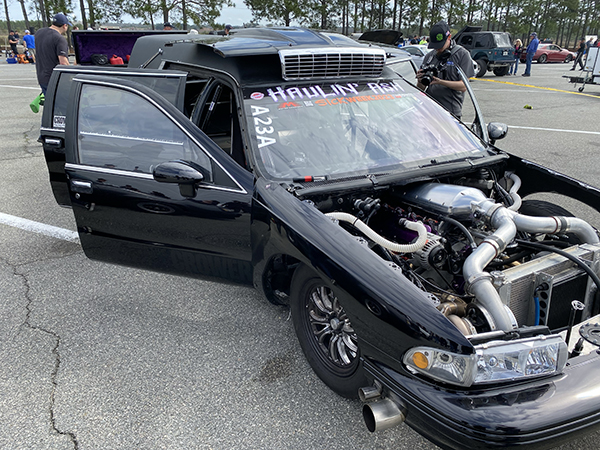
Jason’s Hearse is a 1993 Buick Roadmaster. The LS engine under the hood utilizes a 427 cubic inch Dart block, a Callies Magnum crankshaft, Callies Enforcer connecting rods, Diamond pistons, Frankenstein LS3 cylinder heads, a Frankenstein Freakshow intake, Crower valvetrain components, and Forced Performance turbos.
“We literally just swapped the twin turbos for this event,” Pickett says. “We went with twin 80mm Forced Performance turbos and all Turbosmart stuff to control the boost. It’s been exceeding expectations so far. Believe it or not, the first two days, we only ran 20-21-lbs. of boost. We used to run 30-lbs. with the ProCharger, but it’s a whole different kind of air now. In terms of horsepower, I would guess that we’re in the 1,700-horsepower range. We should be creeping the 2,000-hp mark here pretty quick.”

What Jason is doing with “Haulin’ Ash” and its 427 LS engine is even more impressive when you factor in that the Hearse weighs around 4,000 lbs.
“We’re going down the track at 4,000-lbs.,” he says. We’re definitely one of the heaviest cars out here.”
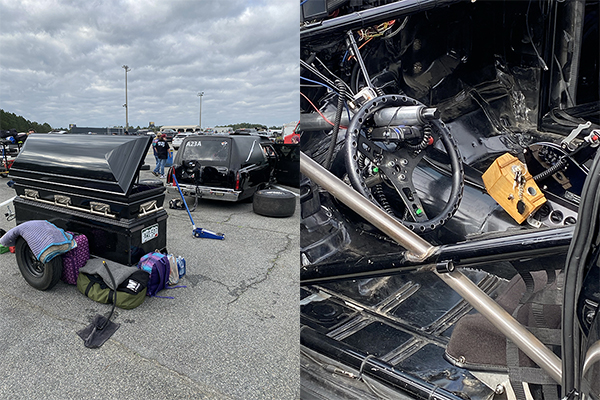
Not only is the combo dialed in to make 8-second passes with a 4,000-lb. Hearse, but the styling of the Hearse is even carried through to the drag-and-drive trailer, which is made to look like a coffin, and the ignition box in the cockpit is a coffin as well.
“It’s all about the little touches, right?” he says. “Bonus points.”
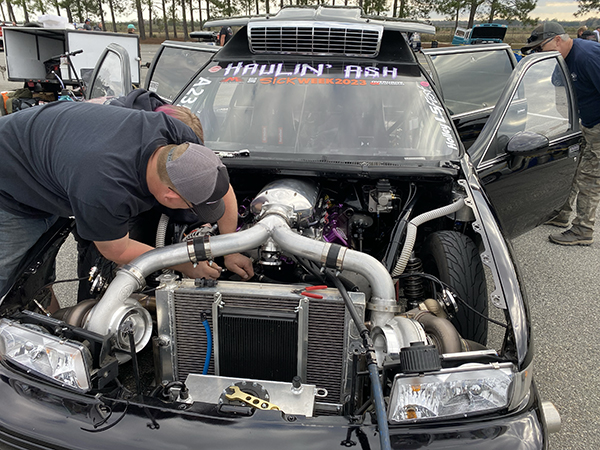
Jason’s week in Florida was his first time competing at Sick Week. With experience at Rocky Mountain Race Week, he certainly isn’t new to drag-and-drive, but Sick Week has its own challenges.
“Obviously, everybody’s expectation is just to finish,” he says. “I think that’s everybody’s number one goal. For us, being from Colorado, we don’t ever get to see density altitude like this, so I was going to be happy to run 8s all week. We started with an 8.1. I was going to be disappointed if we didn’t come out of Florida without a new personal best and we hit that right off the bat on day one. I’m good with that. If we can just keep that up, I’m happy if we can stay sub 8.50 – I’ll be stoked. I mean, that’ll blow me away for a whole new setup that we never had any data on before we got here.”
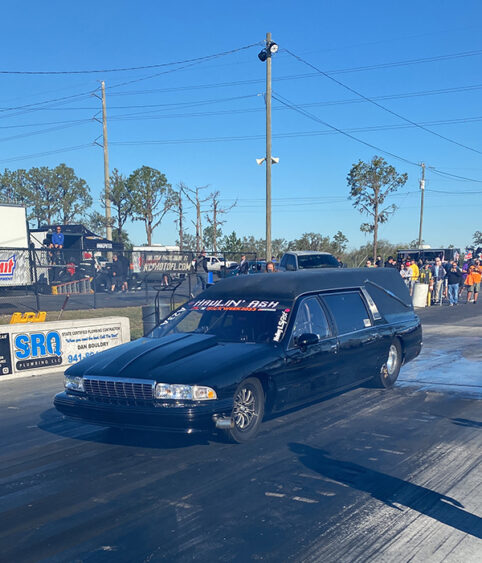
Not only was the Hearse and the 427 LS engine performing on the track, but it was also handling well on the long drives across Florida.
“We run a 4L80 [transmission], so overdrive lock up and you just watch the temperatures drop,” Pickett says. “And, with the turbos, I think it drives a lot nicer on the street.”
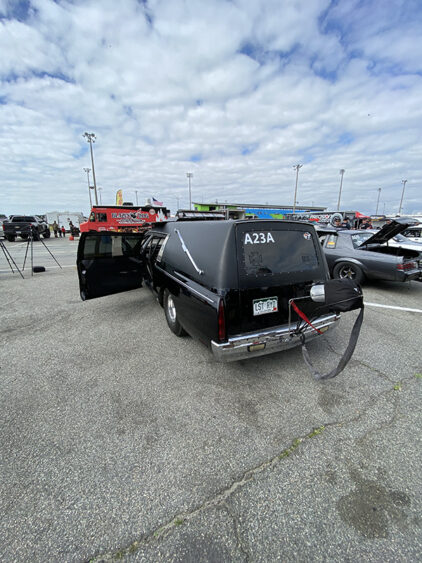
All in all, Jason accomplished his personal best pass of 8.07 at 167 mph, and achieved a sub-8.50 average finishing Sick Week with an 8.47 average at 153 mph. His week was good enough to capture third place in the Unlimited class.
It’s no longer death and funerals, but rather speed and awesomeness!
Engine of the Week is sponsored by PennGrade Motor Oil, Elring – Das Original and NPW Companies. If you have an engine you’d like to highlight in this series, please email Engine Builder Editor Greg Jones at [email protected].





